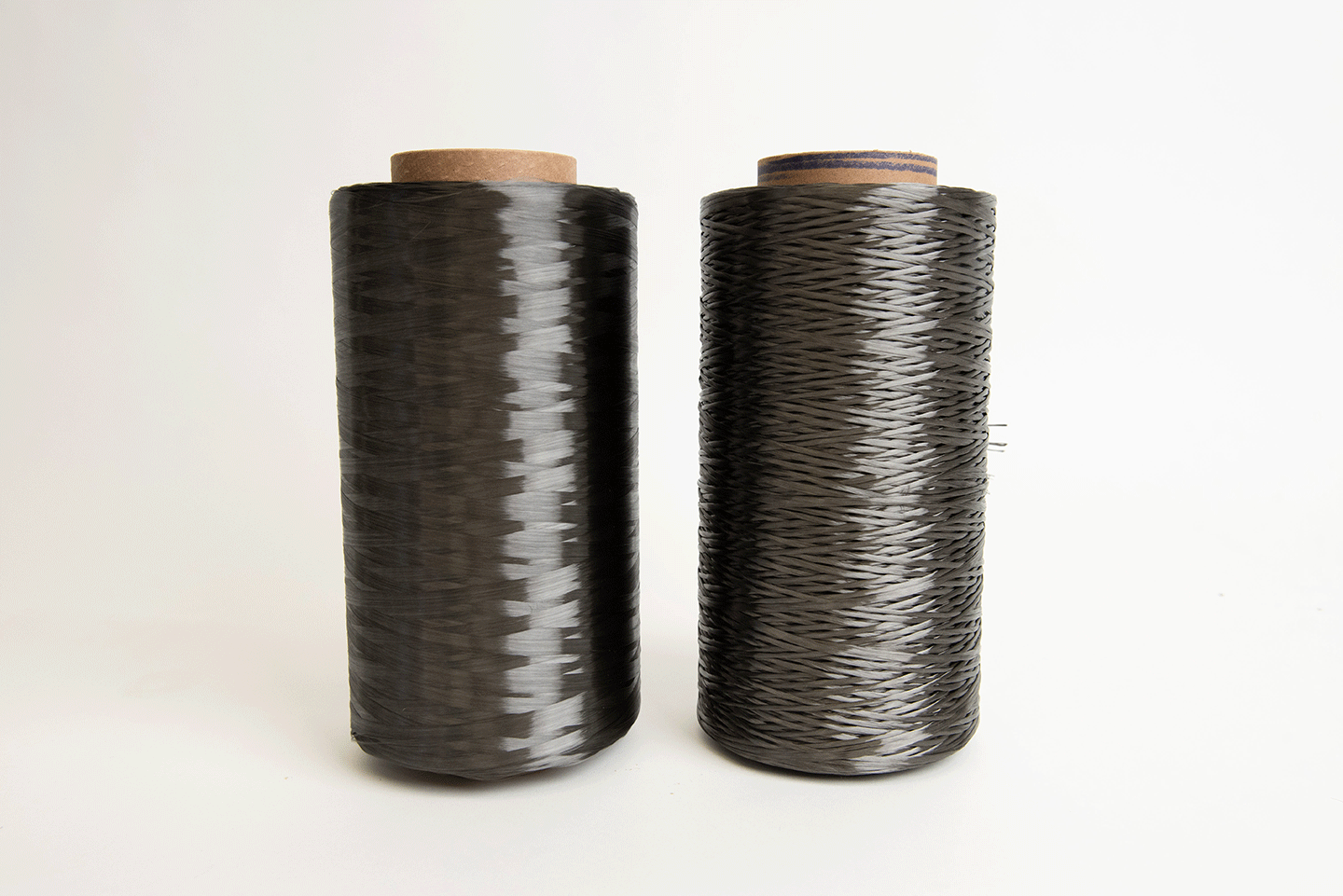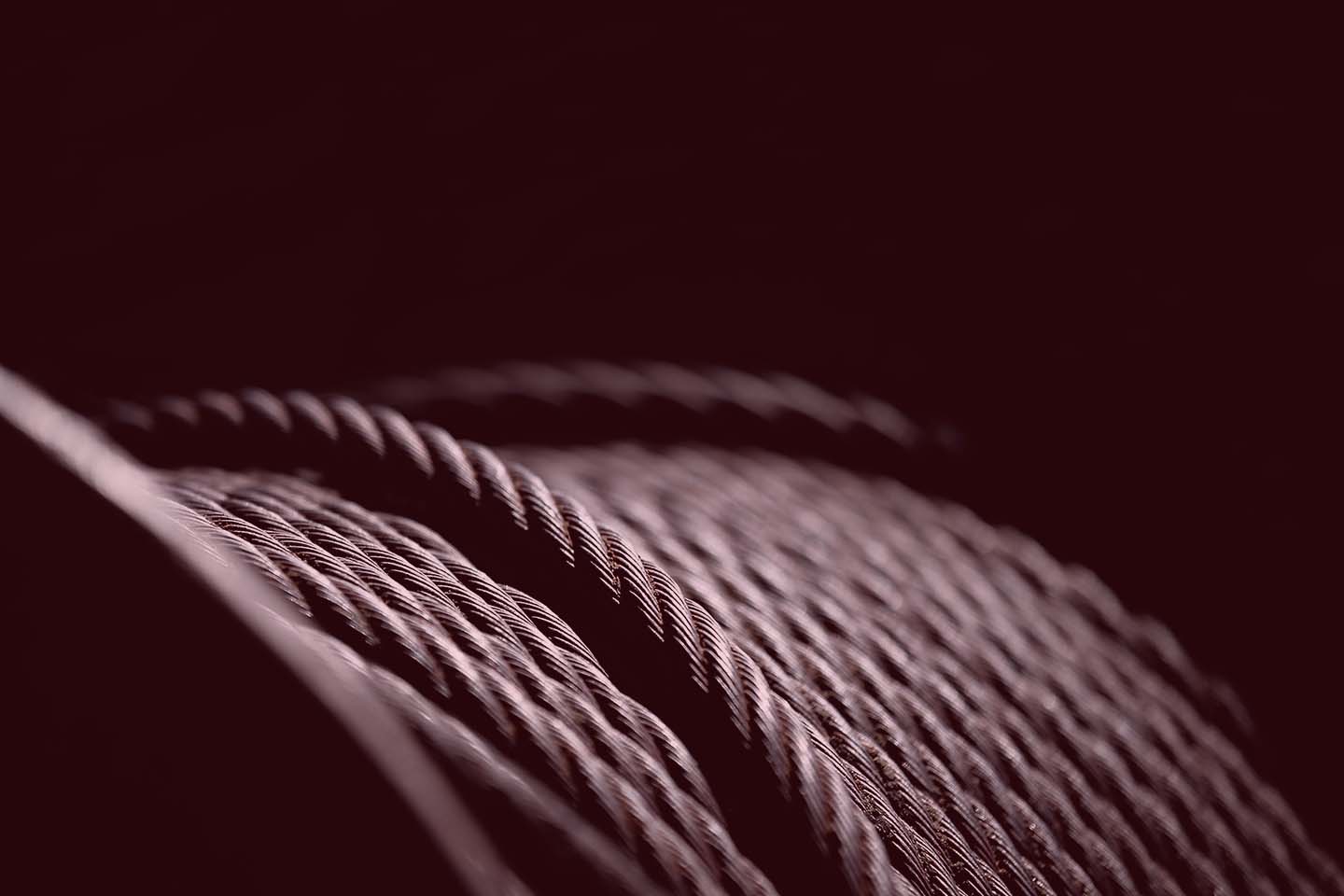Twisting
How Does Twisting Work?
Adding twist to continuous filament fiber helps lock the filaments together, making the tow easier to process in textile conversions. Different levels of twist can have dramatic effects on the final fabric. As more twist is added the tow becomes rounder. Concordia can twist anywhere from 0.1 turns per inch to 50 turns per inch depending on the input material.
Markets
Oil & Gas
Twisted fiber allows for smoother braiding processes. Braided tubes are used in the Oil & Gas field where corrosion resistance and high mechanical performance are critical.
Commercial Aviation
When creating high precision textiles, fiber twisting provides the consistent cross section needed to make complicated components, like fan blades and engine cases for commercial planes.
Industrial
Twisting fibers together for various industrial applications allows our customers to get more out of a fiber than the sum of its parts.
Request a Quote
We are excited to engineer a solution to your exact specifications.
Request a sample or quote on a custom order today.



